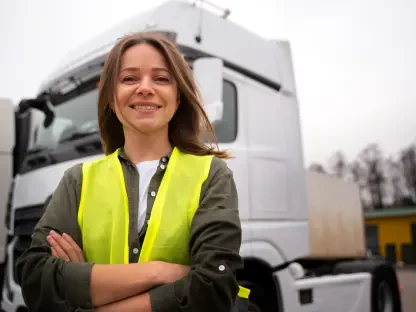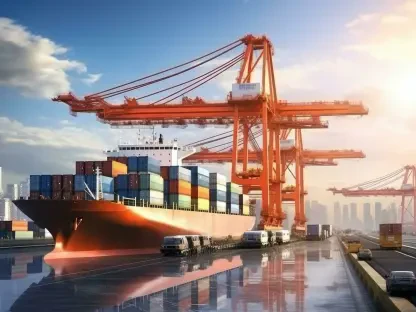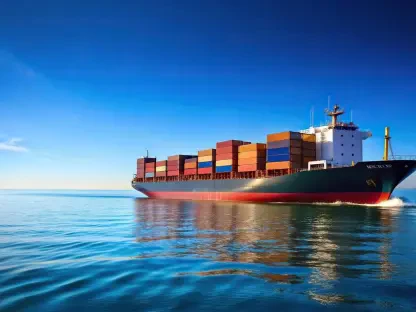Understanding the Last-Mile Delivery Landscape
In the bustling world of modern commerce, last-mile delivery stands as the critical final step in the supply chain, ensuring that goods reach consumers’ doorsteps with speed and precision. This segment, often the most expensive and complex part of logistics, has become a linchpin for businesses aiming to meet soaring customer expectations in an era dominated by e-commerce. As urban centers grow and online shopping continues to dominate retail, the importance of efficient delivery systems cannot be overstated, shaping not just business success but also consumer trust.
Currently, the market thrives under the pressure of heightened demand for rapid and reliable service, fueled by a global shift toward digital purchasing platforms. Key segments like urban delivery, hyperlocal fulfillment, and same-day services have emerged as focal points, catering to diverse needs from groceries to high-value electronics. Major players, including logistics giants and agile startups, compete fiercely, leveraging cutting-edge technologies such as route optimization and real-time tracking to gain an edge in this dynamic space.
The significance of this sector extends beyond mere logistics, directly impacting customer satisfaction and driving economic activity through job creation and infrastructure investment. As the final touchpoint in the consumer journey, last-mile delivery often determines brand loyalty, making it a vital component of both operational strategy and economic growth. Its role in sustaining the momentum of e-commerce underscores a broader narrative of innovation and adaptability in supply chain management.
Market Dynamics and Growth Projections
Key Trends Shaping the Industry
A profound surge in e-commerce has redefined the contours of last-mile delivery, pushing companies to prioritize speed and convenience to match consumer demand. This trend, evident in the proliferation of online marketplaces, compels logistics providers to innovate relentlessly, ensuring that parcels arrive not just on time but often within hours of an order being placed. Such expectations have transformed delivery from a backend operation into a front-facing competitive advantage.
Emerging technologies are playing a transformative role, with drones, autonomous vehicles, and advanced data analytics enhancing operational efficiency. These tools help in navigating complex urban environments and reducing delivery times, while also offering insights into consumer behavior for better service customization. Additionally, consumer preferences are evolving, with a growing insistence on transparency, flexible scheduling, and contactless options becoming standard requirements for modern delivery services.
Urban density and the rise of on-demand platforms have opened new opportunities, particularly in niche markets like pharmaceutical delivery. These developments highlight a shift toward hyper-specialized services that cater to immediate needs in densely populated areas. As cities continue to grow, the ability to tap into these emerging segments offers a pathway for differentiation in an increasingly crowded market.
Growth Forecasts and Performance Metrics
Recent industry data indicates that the last-mile delivery sector is experiencing robust expansion, with market size projections showing significant increases over the coming years. Key performance indicators such as delivery speed, cost per delivery, and customer retention rates remain critical benchmarks for assessing operational success. These metrics provide a clear picture of efficiency and consumer satisfaction, guiding strategic decisions.
Revenue potential is vast, with diverse models like subscription services and corporate contracts offering stable income streams. Urban hubs, where e-commerce activity is most concentrated, are expected to drive much of this growth, serving as focal points for investment and expansion. The focus on these high-density areas underscores the importance of localized strategies to maximize reach and profitability.
Looking ahead from this year, market expansion is anticipated to accelerate, particularly in regions with strong online retail penetration. Projections suggest that sustained growth will hinge on the ability to balance cost structures with service quality, ensuring that scalability does not compromise customer experience. This forward-looking perspective emphasizes the need for continuous adaptation to maintain a competitive edge.
Challenges Facing Last-Mile Delivery
High operational costs pose a significant hurdle for last-mile delivery providers, with expenses related to fuel, labor, and vehicle maintenance often straining profit margins. In a market characterized by intense competition, companies must navigate these financial pressures while striving to offer competitive pricing. This balancing act remains a persistent challenge for both established firms and new entrants.
Technological integration, while beneficial, introduces its own set of difficulties, particularly in scaling infrastructure and adopting advanced systems seamlessly. The complexity of merging new tools with existing operations can lead to temporary inefficiencies, requiring substantial investment and expertise. Moreover, logistical issues such as urban congestion further complicate delivery timelines, often resulting in delays that frustrate customers.
Addressing these obstacles necessitates innovative solutions, including strategic partnerships that can share resources and expertise. Fleet optimization and a commitment to sustainable practices, such as adopting electric vehicles, also offer pathways to reduce costs and improve efficiency. By focusing on these areas, companies can mitigate some of the inherent challenges while positioning themselves for long-term stability.
Regulatory Environment and Compliance
The regulatory framework governing last-mile delivery encompasses a range of issues, from labor laws to transportation rules and emissions standards. Compliance with these regulations is essential to avoid penalties and maintain operational continuity, particularly in urban areas where access restrictions can limit delivery routes. Navigating this landscape requires a proactive approach to policy adherence.
Sustainability mandates are increasingly shaping fleet decisions, pushing companies toward electric and low-emission vehicles to meet environmental goals. These regulations not only influence operational costs but also affect public perception, as eco-friendly practices become a marker of corporate responsibility. Staying ahead of such requirements can provide a competitive advantage in a socially conscious market.
As regulatory changes loom on the horizon, their potential impact on business models cannot be ignored. Adjustments to labor policies or stricter urban access rules could necessitate significant operational shifts, affecting everything from staffing to delivery timelines. Anticipating and preparing for these changes will be crucial for maintaining agility and ensuring compliance without sacrificing efficiency.
Future Outlook and Emerging Opportunities
The horizon of last-mile delivery is marked by promising innovations, with autonomous systems and drone technology poised to revolutionize how goods are transported. These advancements, though still in early stages, hint at a future where human intervention in delivery processes could be minimized, enhancing speed and reducing costs. Keeping pace with such developments will be key for industry leaders.
Market disruptors, including new entrants leveraging gig economy models and sophisticated logistics platforms, are reshaping competitive dynamics. These players bring fresh approaches to service delivery, often focusing on niche areas or underserved regions. Additionally, consumer preferences are tilting toward personalized and eco-friendly options, creating demand for tailored solutions that prioritize both convenience and sustainability.
Growth areas such as reverse logistics and specialized delivery services present untapped potential, particularly in markets that have yet to be fully penetrated. Expansion into these segments, alongside global economic conditions and technological maturity, will likely influence the industry’s trajectory. Regulatory shifts will also play a role, requiring businesses to remain adaptable to capitalize on emerging opportunities.
Conclusion and Strategic Recommendations
Reflecting on the insights gathered, the last-mile delivery sector demonstrates remarkable growth potential and profitability, driven by relentless innovation and consumer demand. The analysis highlights how technology and sustainability shape operational strategies, while challenges like high costs and regulatory constraints test industry resilience. These findings underscore the delicate balance companies maintain to thrive in a competitive landscape.
Moving forward, stakeholders should prioritize investments in cutting-edge technologies to streamline operations and enhance customer experiences. Embracing sustainable practices, such as expanding electric vehicle fleets, emerges as a non-negotiable step to align with environmental goals and consumer expectations. Diversifying revenue streams through subscription models or niche services also offers a buffer against market volatility.
Ultimately, the path ahead demands a focus on urban fulfillment hubs as strategic assets for scaling operations in high-demand areas. Exploring partnerships and leveraging data analytics for predictive insights stand out as actionable steps to stay ahead of market shifts. By adopting these measures, businesses can solidify their position in a transformative industry poised for continued evolution.









